Bien que la communication et la collaboration sur le lieu de travail restent fortement tributaires du courrier électronique, il est important de fournir des messages cohérents pouvant être utilisés par tous les services. Des réponses différentes aux mêmes questions peuvent présenter des risques.
L'un des moyens d'atténuer les risques associés à la réponse de plusieurs membres de l'équipe à des e-mails consiste à créer un modèle Gmail. Les modèles d'e-mails Gmail constituent des structures de base pour rédiger des messages, faciliter la collaboration en équipe et améliorer l'efficacité organisationnelle.
Les modèles peuvent être utilisés pour toutes sortes de messages répétitifs tels que :
- E-mails de bienvenue
- Sensibilisation au froid
- Suivi des ventes
- Demandes fréquentes des clients
- E-mails de confirmation
- Marketing par e-mail
Boostez la collaboration en équipe avec les modèles Gmelius—commencer maintenant !
Les avantages des modèles Gmail
Modèles d'e-mails Gmail sont les squelettes d'un courrier électronique que vous pouvez remplir ou envoyer tel quel.
Les modèles d'e-mails peuvent vous aider à :
Réduire le temps de composition
De nombreuses organisations utilisent des modèles d'e-mail efficaces pour créer des réponses rapides, car les membres de l'équipe peuvent facilement insérer des modèles dans les e-mails au lieu de rédiger des messages originaux à partir de zéro, ce qui réduit considérablement le temps de rédaction.
De même, les modèles peuvent aider à répondre aux questions fréquemment posées nécessitant des instructions, car ces e-mails sont souvent longs. Ces modèles augmentent votre temps de réponse, améliorent la satisfaction de vos clients et améliorent votre capacité à respecter les délais ou les accords de niveau de service (SLA).
Garantir la cohérence et le ton de la marque
Les modèles permettent d'unifier les équipes lorsqu'elles fournissent des informations similaires. Lors de la transmission d'un message d'une organisation, il est essentiel de garantir un ton cohérent. Supposons, par exemple, que chaque agent du service client de votre équipe réponde à une demande par e-mail courante avec une réponse légèrement différente à chaque fois. Dans ce cas, vous perdriez la cohérence de votre marque et votre entreprise risquerait de perdre de la clientèle et des bénéfices.
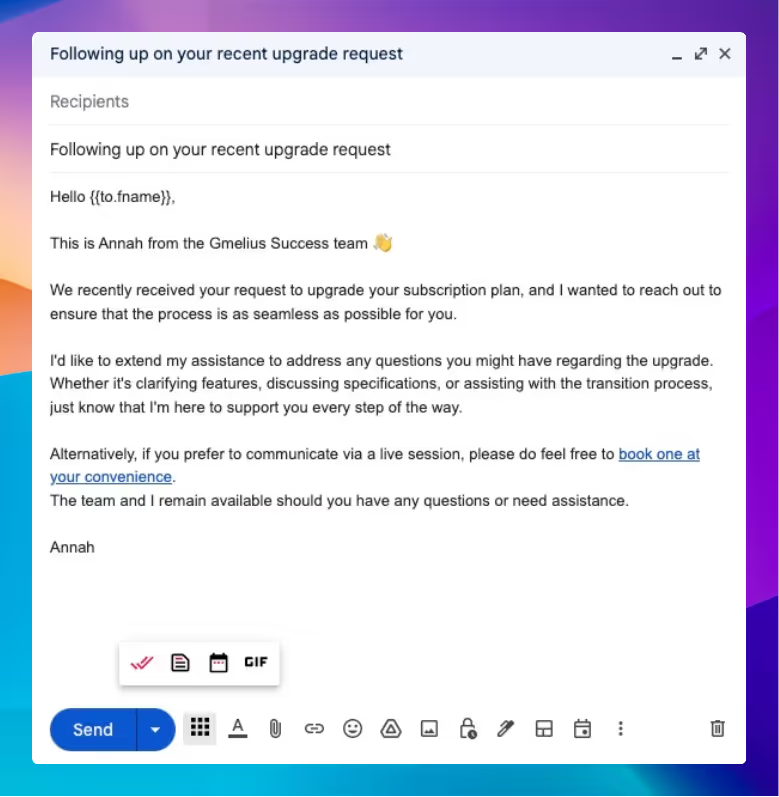
L'utilisation de réponses standardisées permet de garantir que tous les membres de l'équipe transmettent le même message de manière cohérente, créant ainsi une image de confiance et professionnelle.
Encouragez la collaboration en équipe
Lorsque les administrateurs créent des modèles d'e-mails Gmail et les partagent avec leurs équipes, les employés ont la possibilité d'organiser plus efficacement leurs réponses aux clients. Bien que Gmail à lui seul ne permette pas de partager automatiquement des modèles d'e-mail, il existe d'autres Extensions pour Gmail disponibles qui offrent des solutions robustes pour les équipes, petites ou grandes. Les modèles partagés peuvent être un outil précieux permettant aux équipes de maintenir la cohérence et l'efficacité de leurs communications.
Étape par étape : comment créer des modèles d'e-mail dans Gmail
Voici le processus étape par étape de création de modèles dans Gmail.
Étape 1 : activer les modèles

Si ce n'est pas déjà fait, vous devez activer les modèles dans les paramètres de votre compte Gmail. Dans le coin supérieur droit, sélectionnez icône d'engrenage qui affichera ensuite une liste de choix. Sous 'Réglages rapides', sélectionnez'Afficher tous les paramètres'. Sous la barre de recherche en haut au milieu, il y aura des onglets. Sélectionnez « »Avancé'. En dessous de « avance automatique » se trouvera «Modèles'. Sélectionnez « »Activer'et enregistrer les modifications.
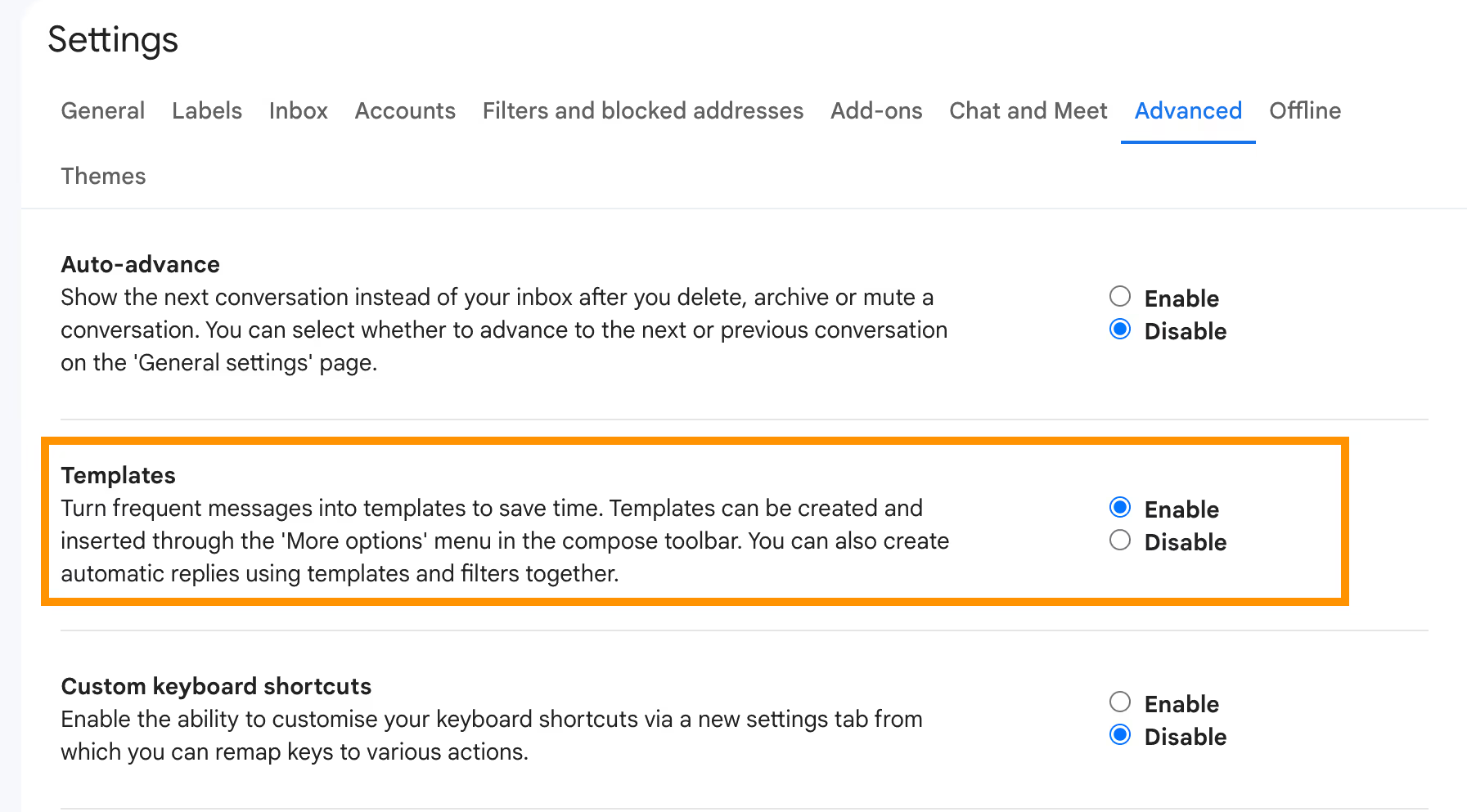
Pour créer un modèle, vous devez sélectionner Composer dans le coin supérieur gauche de votre écran, sous le logo Gmail. Le nouvel e-mail devrait apparaître dans le coin inférieur droit de l'écran.
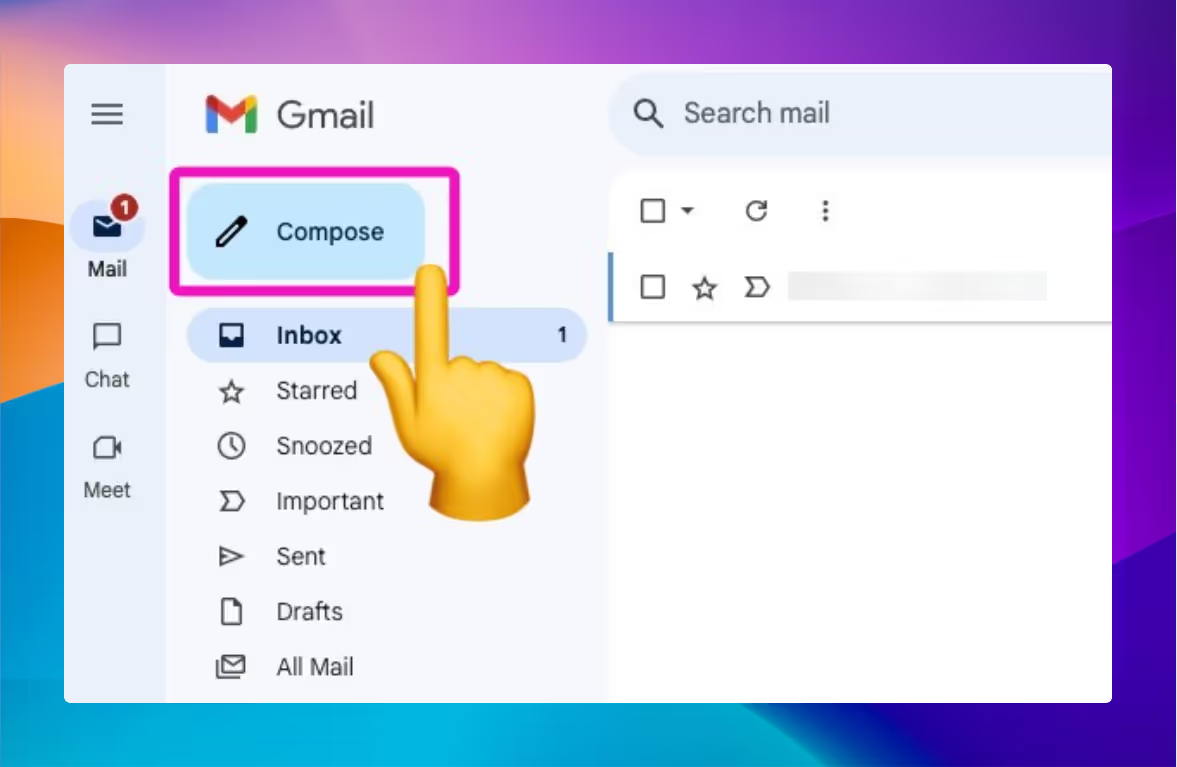
Étape 2 : créer un modèle dans Gmail
Maintenant que le nouvel e-mail est ouvert, composez votre message.
Étape 3 : enregistrer un modèle dans Gmail
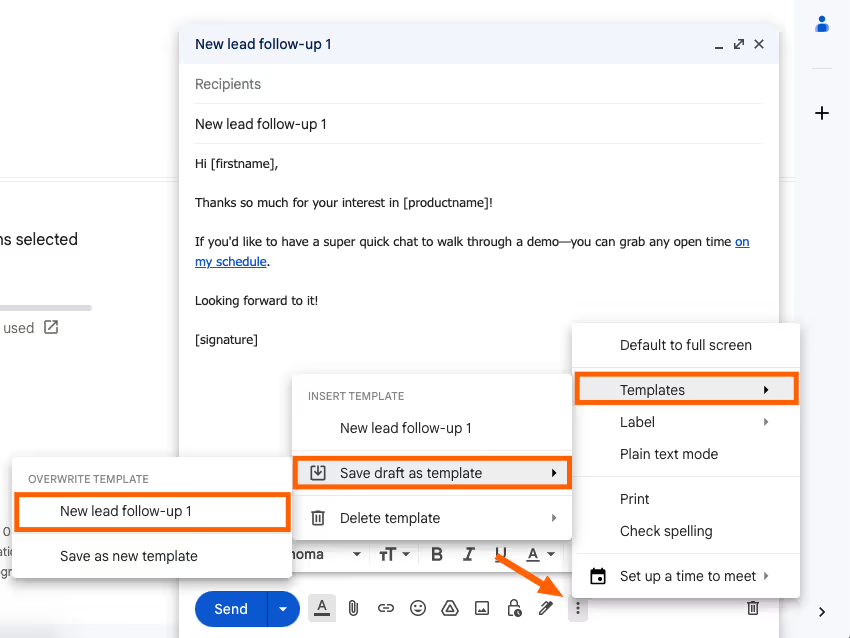
Que votre e-mail soit en taille réelle ou dans une fenêtre contextuelle en bas de la boîte, un bouton bleu « Envoyer » apparaîtra dans le coin inférieur gauche. À l'extrême droite du bouton « Envoyer », il y a une icône représentée par trois points verticaux. Sélectionnez cette icône. Passez votre souris sur la deuxième option en partant du haut 'Modèles'.
Passez votre souris sur « Enregistrer le brouillon en tant que modèle. » Cela vous donne la possibilité d'enregistrer le modèle par rapport aux versions précédentes ou de l'enregistrer en tant que modèle distinct. Si vous souhaitez l'enregistrer sur un autre modèle, sélectionnez le nom sous lequel vous souhaitez l'enregistrer sous « Remplacer le modèle »'. Si vous souhaitez l'enregistrer en tant que nouveau modèle, sélectionnez »Enregistrer en tant que nouveau modèle'.
* Remarque : En passant la souris sur « Modèles », vous aurez également la possibilité d'insérer vos modèles enregistrés pour vous y référer ultérieurement. Les modèles enregistrés sont accessibles depuis la bibliothèque de modèles pour une utilisation ultérieure.
Gestion et partage de modèles d'e-mails
La gestion et le partage de modèles d'e-mails constituent un élément essentiel de l'utilisation efficace des modèles Gmail.
Mise à jour des modèles
Il est essentiel de maintenir à jour vos modèles d'e-mail pour maintenir une communication efficace. Pour modifier un modèle existant, procédez comme suit :
- Ouvrez votre compte Gmail et cliquez sur l'icône représentant un engrenage dans le coin supérieur droit.
- Sélectionnez « Afficher tous les paramètres » et accédez à l'onglet « Avancé ».
- Faites défiler la page jusqu'à la section « Modèles » et cliquez sur le modèle que vous souhaitez modifier.
- Apportez les modifications nécessaires au modèle dans la fenêtre de rédaction.
- Cliquez sur « Enregistrer le brouillon » pour enregistrer le modèle mis à jour.
Modification de modèles
Si vous devez remplacer un modèle existant par une nouvelle version, vous pouvez le faire en créant un nouveau modèle portant le même nom. Voici comment procéder :
- Ouvrez Gmail et cliquez sur l'icône représentant un engrenage dans le coin supérieur droit.
- Sélectionnez « Afficher tous les paramètres » et accédez à l'onglet « Avancé ».
- Descendez jusqu'à la section « Modèles » et cliquez sur le bouton « Nouveau modèle ».
- Entrez le même nom que le modèle existant que vous souhaitez remplacer.
- Rédigez votre nouveau message et cliquez sur « Enregistrer le brouillon » pour enregistrer les modifications.
Supprimer les modèles non utilisés
Au fil du temps, vous pouvez accumuler des modèles qui ne sont plus nécessaires. La suppression de ces modèles inutilisés peut vous aider à organiser votre compte Gmail. Pour supprimer un modèle, procédez comme suit :
- Ouvrez Gmail et cliquez sur l'icône représentant un engrenage dans le coin supérieur droit.
- Sélectionnez « Afficher tous les paramètres », puis cliquez sur l'onglet « Avancé ».
- Faites défiler la page jusqu'à la section « Modèles » et recherchez le modèle que vous souhaitez supprimer.
- Cliquez sur le bouton « Supprimer le modèle » pour supprimer le modèle de votre liste.
Comment améliorer les modèles Gmail de votre équipe
L'utilisation de modèles dans un espace de travail améliore l'organisation et la productivité. Bien que les instructions ci-dessus décrivent les étapes de base pour créer des modèles, il y a tout de même quelques points à garder à l'esprit. Une gestion efficace des modèles est essentielle pour optimiser les avantages des modèles Gmail.
Titres
Quand donner un nom à vos modèles, veillez à ce que les titres soient courts et précis. Par exemple, « Bienvenue aux nouveaux employés » ou « Merci ». Si les membres de votre équipe parcourent une liste de modèles dont les titres sont longs ou confus, sélectionner le bon modèle peut prendre du temps.
Voici d'autres exemples de titres de modèles :
- Configuration du nom d'utilisateur
- Réinitialisation du mot
- Feuille de bienvenue
- Pitch de vente
- Termes et conditions
Il est préférable de conserver les titres dans une plage de 25 caractères : Gmail affiche uniquement les 25 premiers caractères de chaque titre de modèle dans la liste déroulante de sélection. Le respect des conventions de dénomination des modèles peut aider les membres de l'équipe à identifier rapidement le modèle approprié.
Personnalisation
Les e-mails personnalisés et la personnalisation sont possibles dans Gmail ; toutefois, tirer parti de ressources externes peut vous aider personnaliser les modèles encore plus loin. Après tout, les clients préfèrent les e-mails personnalisés.
Gmelius, un outil de collaboration par e-mail pour Gmail, propose des fonctionnalités avancées pour créer des modèles d'e-mail. Les modèles HTML dotés d'un éditeur de code source créent des emplacements variables pour les inserts avant leur envoi. En outre, l'utilisation de variables peut inclure les noms des bénéficiaires ou le nom commercial du destinataire. Ces variables vous permettent de personnaliser les e-mails en un clic. Le contenu dynamique peut être utilisé pour personnaliser davantage les modèles d'e-mail en incluant des informations spécifiques au destinataire.
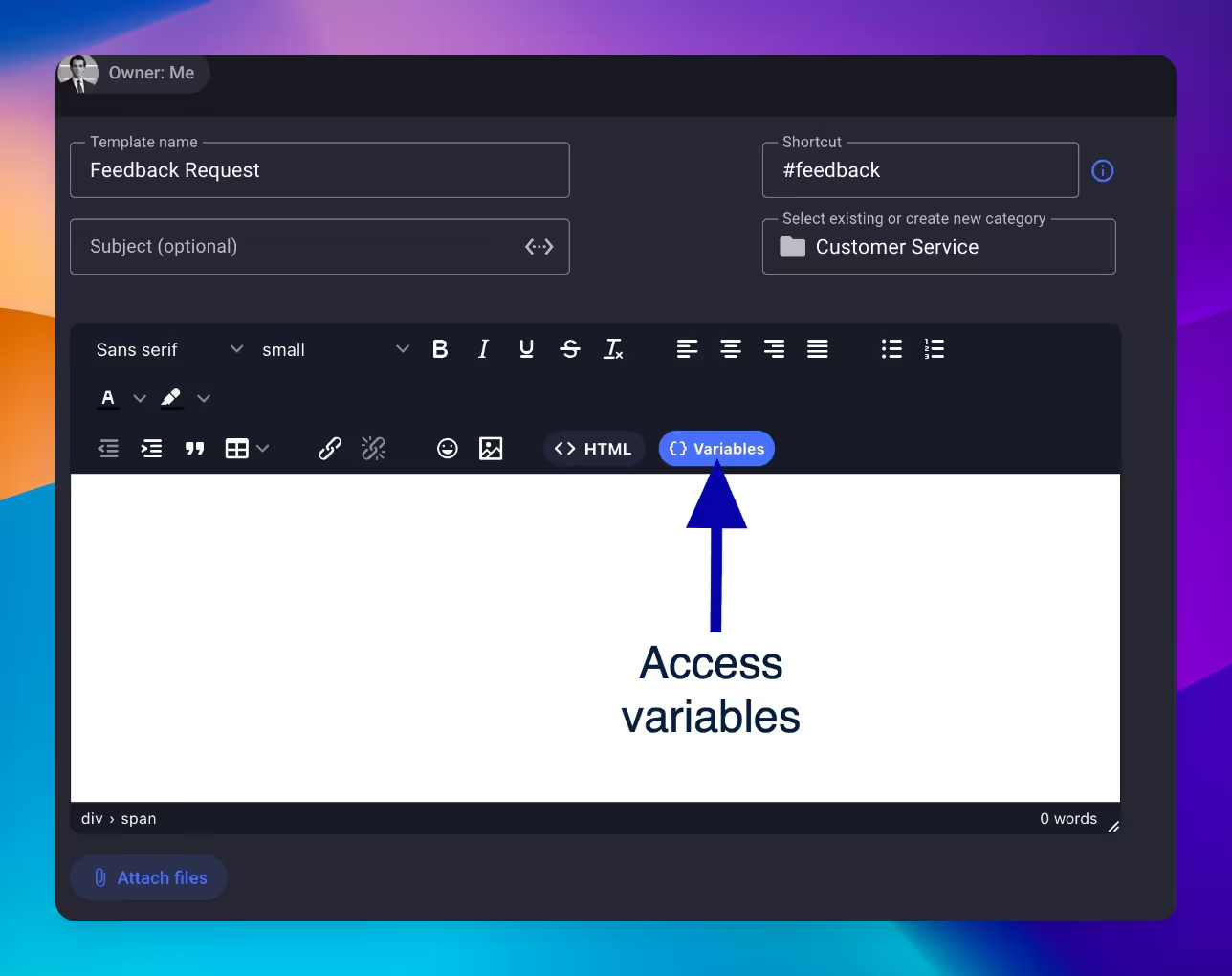
Automatisation
L'automatisation de votre flux de travail quotidien est le meilleur moyen d'améliorer l'expérience de messagerie de votre équipe. La définition de règles d'automatisation dans Gmail permet de créer des réponses automatisées à l'aide de modèles, d'améliorer les temps de réponse de l'entreprise, d'aider les membres de l'équipe à respecter les accords de niveau de service (SLA) et de garantir la cohérence de la marque sans trop de travail.
Pour automatiser les e-mails dans Gmail à l'aide de modèles, vous devez d'abord définir un filtre. Vous pouvez le faire en sélectionnant le bouton »« options de recherche » à droite de la barre de recherche. Une fois votre filtre défini, les paramètres avancés afficheront d'autres options avec un 'envoyer un modèle' comme l'un d'entre eux. Sélectionnez le modèle que vous souhaitez utiliser dans le cadre de votre filtre et il fera immédiatement partie de votre réponse automatique. Résolution des problèmes courants
Même avec les meilleures pratiques, vous pouvez rencontrer des problèmes avec les modèles Gmail. Voici quelques problèmes courants et comment les résoudre :
Le modèle n'est pas enregistré
Si vous ne parvenez pas à enregistrer un modèle, assurez-vous que les modèles sont activés dans vos paramètres Gmail. Voici comment procéder pour vérifier :
- Ouvrez Gmail et cliquez sur l'icône représentant un engrenage dans le coin supérieur droit.
- Sélectionnez »Afficher tous les paramètres» et accédez au »Avancéonglet ».
- Faites défiler la page vers le bas jusqu'à »Modèles» et assurez-vous que la section »Activer les modèles» est cochée.
- Cliquez sur »Enregistrer les modifications» pour appliquer les paramètres.
Si le problème persiste, essayez de cliquer sur le bouton »Enregistrer le brouillon» au lieu du bouton »Enregistrerbouton ». Cela enregistrera le modèle en tant que brouillon, que vous pourrez ensuite modifier et mettre à jour ultérieurement.
Gmelius : partager des modèles d'e-mails avec votre équipe
Lorsque vous créez des modèles dans Gmail, il existe de nombreuses manières d'optimiser l'efficacité et la clarté. Néanmoins, la possibilité de partager des modèles d'e-mail avec votre équipe est limitée au copier-coller. Avec Gmelius, les membres de votre équipe peuvent facilement partager des modèles d'e-mails les uns avec les autres pour améliorer la productivité, la cohésion et la messagerie unifiée.
Les modèles peuvent être insérés directement depuis la fenêtre « Composer », ce qui vous permet d'économiser du temps lors de la recherche d'un modèle spécifique. En outre, vous pouvez inclure automatiquement les membres de votre équipe lorsqu'un modèle d'e-mail spécifique est utilisé ou ajouter une étiquette Gmail particulière pour plus de transparence. Des outils collaboratifs tels que Gmelius peuvent améliorer le partage et la gestion des modèles d'e-mails.
3 avantages du partage de modèles d'e-mails
- Augmente la productivité de votre équipe en économisant du temps, afin de pouvoir se concentrer sur des tâches plus importantes.
- Garantit communications cohérentes avec un solide portefeuille de contenus approuvés, utiles et attrayants. L'utilisation d'un modèle enregistré garantit que votre équipe maintient une communication cohérente avec les clients et les parties prenantes internes.
- Permet à votre équipe d'évaluer clairement les processus et amplifier leur stratégie de sensibilisation.
Avec Gmelius, partager vos modèles dans Gmail ne pourrait pas être plus simple : il suffit d'un clic. Vous pouvez sélectionner certains collègues dans une liste déroulante ou partager votre modèle avec toute l'équipe.

Créez des modèles d'e-mail dans Gmail à l'aide de Gmelius. Prêt à démarrer ? INSCRIVEZ-VOUS aujourd'hui !
![Comment créer des modèles d'e-mails dans Gmail [Guide 2025]](https://cdn.prod.website-files.com/6737568a4ac417efeb387e5a/67d2faa1d99cc77d9217bb09_67bf41738be7cc9e086b55a4_Playful%2520Productivity_%2520Modern%2520Tec.avif)


.png)
.avif)
.avif)
.avif)
.avif)
%20(1).avif)